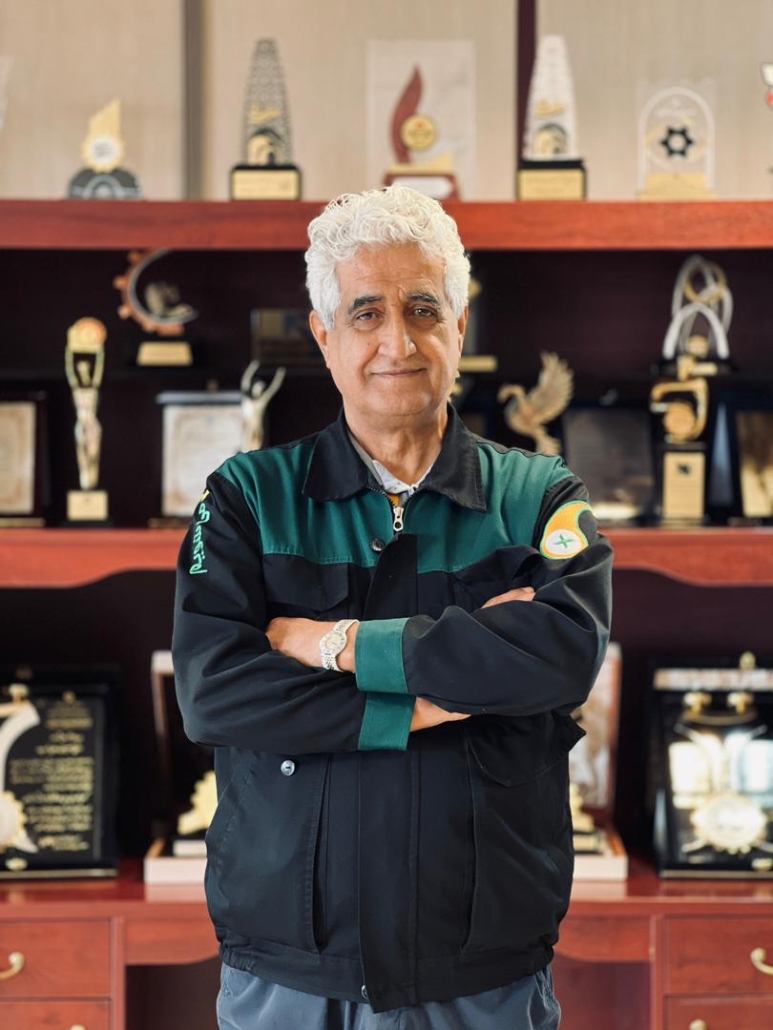History Of Modalal Cement
In the year 1383 (2004-2005), Modalal Industrial Group, under the excellent supervision of Mr. Javad Modalal, made the decision to establish a gray cement production plant, named ‘Modalal Cement,’ at a distance of 12 kilometers from the Kermanshah-Islamabad Gharb road. This decision aimed to meet the domestic demand and also cater to the growing demand of neighboring countries, especially Iraq.
In the initial stage, extensive studies were conducted regarding the land and raw materials to find the exact location for the plant. Eventually, this plant was constructed on a land area of approximately 100 hectares, with a distance of 200 meters from the main mines
” “From the beginning, ‘Superior Quality of Products and Sustainable Environmental Conservation and Development’ has been chosen as the policy and guiding principle for selecting the required equipment and technologies, as well as the basis for selecting domestic and international suppliers. This ensures that we can produce and provide high-quality products that meet the expectations of our customers while preserving the environment.This plant consists of two identical production lines, each with a daily clinker production capacity of 3,500 tons, resulting in a total of 7,000 tons of clinker. It has the capability to load cement up to 10,000 tons per day, both in bulk and packaged formats.
The groundbreaking for this project took place in Azar month of 2007 (November-December 2007), and after 36 months of uninterrupted work, the first line was launched in Azar month of 2010 (November-December 2010). The second line was also put into operation in the same year, in Dey month (December 2010-January 2011), following the approved four-stage scheduling plan..
Introduction of departments and plant equipment:
- Crusher:
The crusher in this plant is a double rotor hammer crusher with a crushing capacity of 1,600 tons of raw materials per hour, manufactured by TKF, Germany.
- Mixing Hall:
The main function of the mixing hall is to store and mix the crushed materials from the crusher. Its structure is arc-shaped and measures 528 meters in length, 53.5 meters in width, and 30 meters in height from the center of the hall. It has a storage capacity of 120,000 tons of raw materials in four piles. The major equipment used in this hall includes a stacker with a capacity of 2,000 tons per hour and two reclaimers, each with a capacity of 450 tons per hour, responsible for feeding the mills with raw materials.
- Mills and Material Silos:
The main purpose of the mills is the final grinding of the raw materials to achieve the desired quality characteristics. The resulting product is homogenized and stored in material silos. The mills in this plant are vertical roller mills manufactured by Polysius, Germany, with a nominal production capacity of 300 tons per hour for each mill.
- Burning Department:
This department consists of a preheater, kilns, and a cooler. The preheaters in this plant are cyclones along with precalciner, which direct the materials to the kilns for burning after passing through the cyclones and precalciner. The produced clinker is then cooled in a grate cooler. Each kiln has a daily production capacity of 3,500 clinkers, with a length and inner diameter of 70 meters and 4.6 meters, respectively. The design of these kilns was carried out by Polysius, Germany, and most of the equipment was manufactured in Iran by Saman Cement Company’s personnel..
- Cement Mill Department:
This plant has three ball mills for cement grinding, each with a production capacity of 160 tons per hour. These mills, manufactured by Polysius, Germany, are responsible for the final blending and grinding of clinker and gypsum to produce cement of the highest quality in terms of particle size distribution.
- Loading and Packaging Silos:
The produced cement is stored and loaded into cement silos. The plant has four cement silos, each with a capacity of 12,000 tons. There are four bulk loading lines with a capacity of 200 tons per hour each, and the packaging section includes four packaging lines that are fed by four rotary packers manufactured by Haver & Boecker, Germany. The supervision of the process is excellent.”

